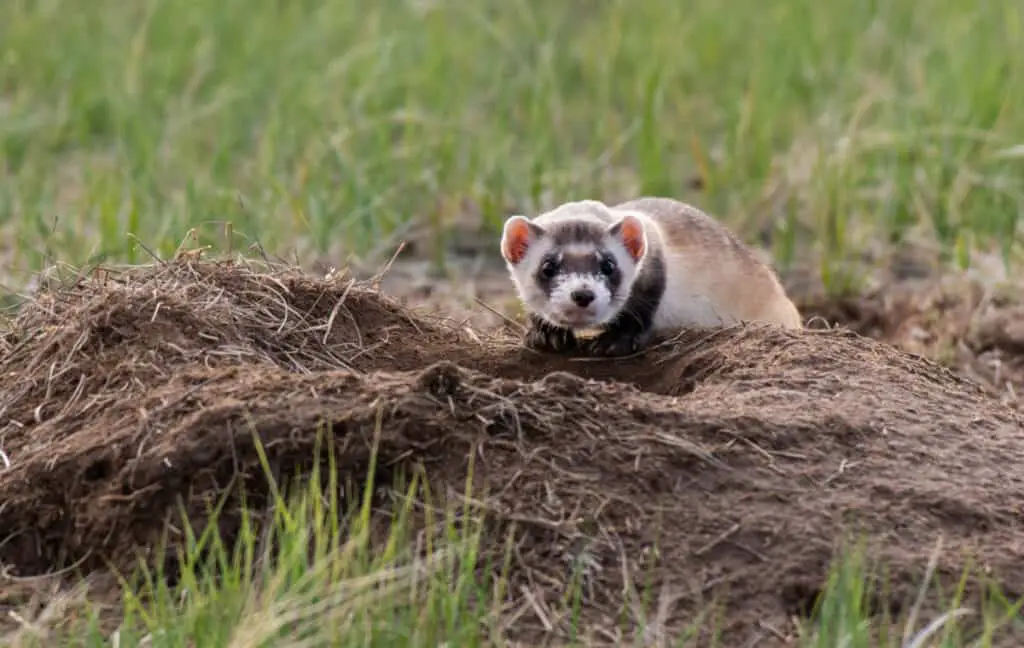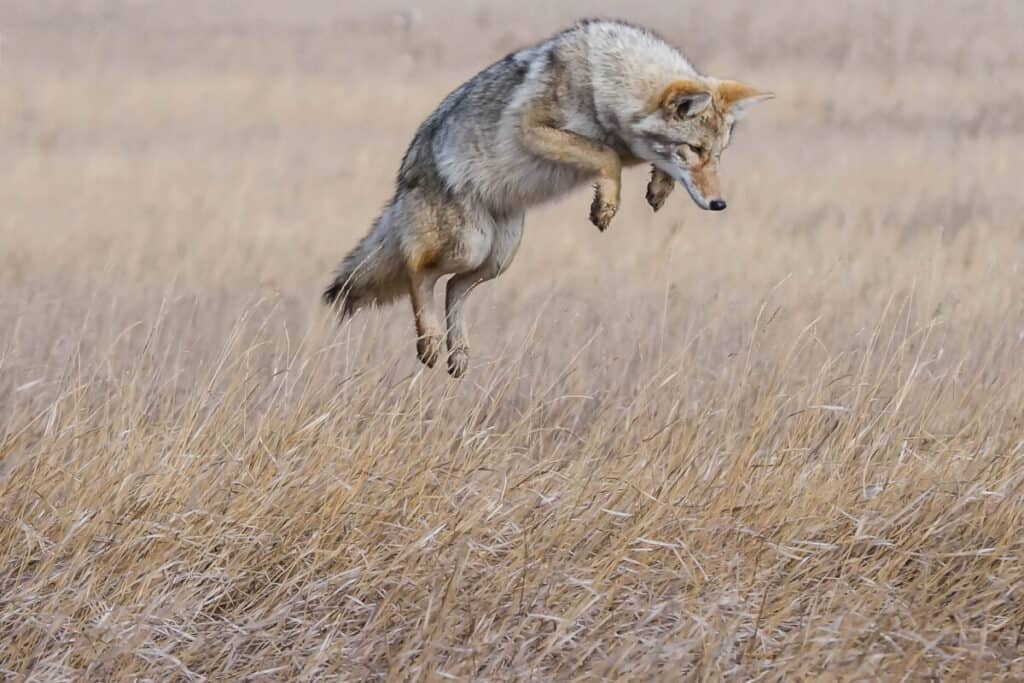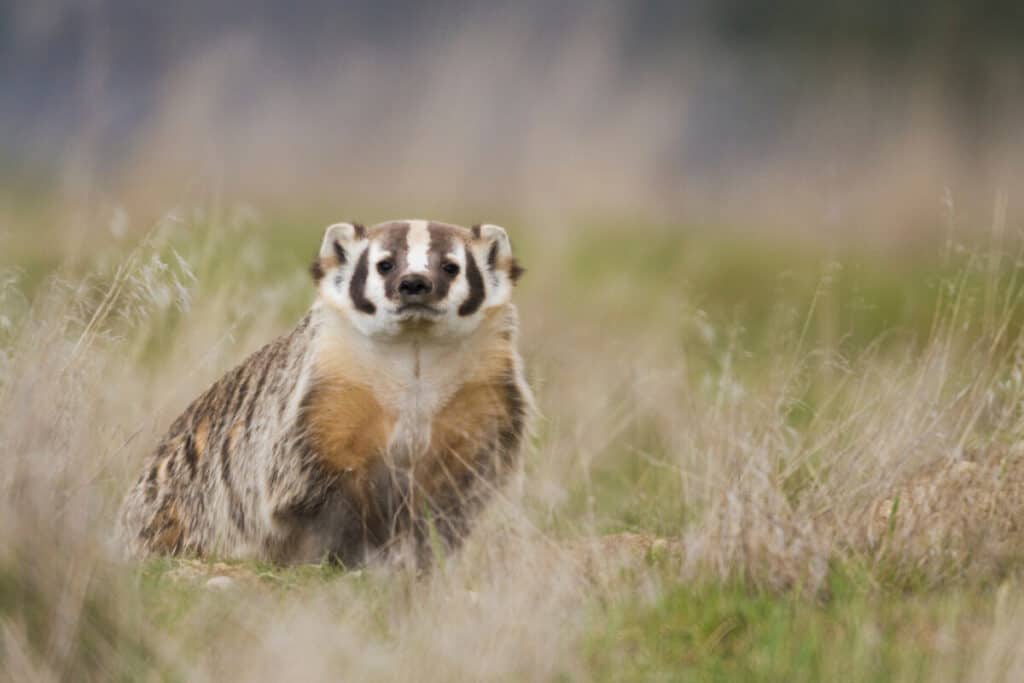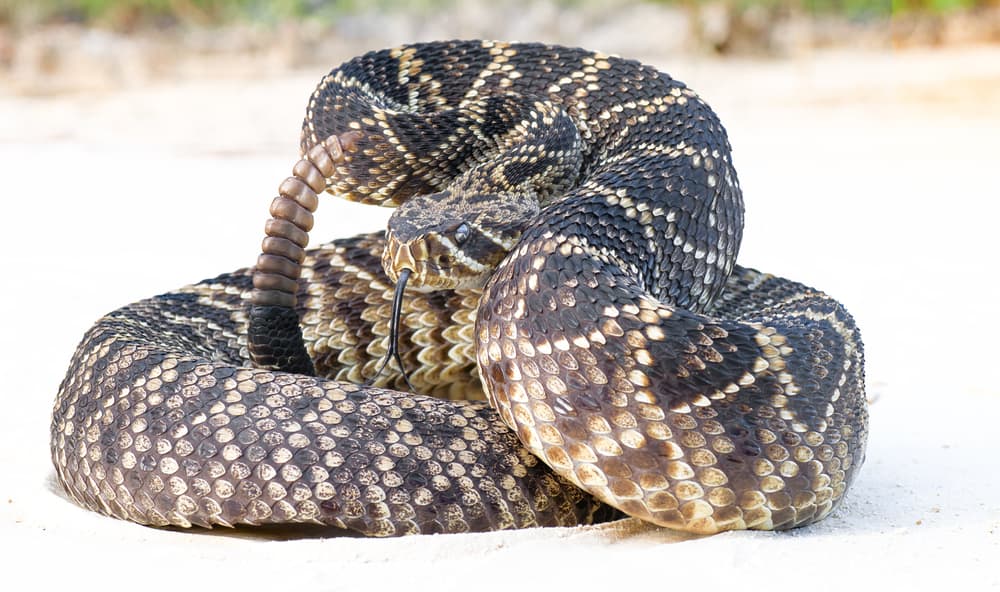Black-footed ferrets are small carnivores native to the Great Plains of North America. Despite their cute appearance, they are highly skilled predators that feed almost exclusively on prairie dogs – a behavior that has made them highly vulnerable to habitat loss and fragmentation.
As such, black-footed ferret populations have become critically endangered in recent decades, with only a few hundred individuals remaining in the wild. Unfortunately for black-footed ferrets, they face not only threats from humans but also from other animals that prey upon them.
In this article, we will explore the various predators of black-footed ferrets, including both natural and human-induced causes of predation. Understanding these factors is critical for conservation efforts aimed at protecting this species and ensuring its survival for future generations.

Natural Predators Of Black-Footed Ferrets
Threats to the survival of black-footed ferrets are numerous, with predation being one of the most significant. The primary predators of these small mammals include coyotes, badgers, and birds of prey such as eagles and hawks.
These animals rely on the ferret’s presence for their own survival, preying upon them in order to obtain food and other resources.
Black-footed ferrets are a keystone species, meaning that they play an important role in maintaining balance within their environment.
Their predation by other animals can have cascading effects throughout the food chain, leading to imbalances and potential extinctions of other species.
As such, it is crucial to protect black-footed ferret populations from natural threats in order to maintain healthy ecosystems.
Ferrets’ Predators Exposed: Unmasking the Threats

Coyotes
Natural Predators of Black-Footed Ferrets are a significant threat to the species’ survival. Coyotes, in particular, have been identified as one of the primary predators of black-footed ferrets.
These canids exhibit opportunistic behavior and prey upon small mammals such as rabbits, rodents, and prairie dogs.
Coyote management strategies have been implemented to reduce their negative impact on black-footed ferret populations. One approach is through lethal control methods aimed at reducing coyote numbers in specific areas where black-footed ferrets reside.
Non-lethal techniques include habitat modification and exclusionary fencing that reduces interactions between coyotes and black-footed ferrets. Furthermore, research has shown that altering land use practices can also decrease coyote presence by creating areas with less suitable habitats for these predators.
However, it should be noted that any management strategy must take into account potential ecological consequences and ensure minimal disruption to ecosystems.
Prairie Dogs’ Predators Exposed: Unveiling the Threats

Badgers
Badgers are one of the main predators of black-footed ferrets. They have a reputation for being skilled hunters and can easily dig up the burrows where ferrets live.
Badgers are carnivorous animals that feed on small mammals, insects, fruits, and nuts. Their diet varies depending on their location, but they prefer to eat rodents like prairie dogs.
Badger behavior is known to be aggressive when threatened or cornered. They use their sharp claws and powerful jaws as defense mechanisms against potential threats.
In some areas where black-footed ferret populations are present, badgers may be controlled through trapping or relocation efforts to prevent predation on the endangered species. However, such measures must be carefully planned and executed with caution since indiscriminate removal of badgers from ecosystems could disrupt natural balances in food webs.

Rattlesnakes
Rattlesnakes are one of the potential predators of black-footed ferrets. These venomous snakes can be found in a variety of habitats, including grasslands, deserts, and rocky areas.
They prefer to live in areas with plenty of cover such as rock crevices or burrows made by other animals. Rattlesnakes are opportunistic hunters that feed on small mammals like rodents, rabbits, and even birds.
The behavior of rattlesnakes is generally solitary except during mating season. They rely heavily on their sense of smell to locate prey and have heat-sensing pits located between their eyes and nostrils which help them identify warm-blooded animals.
Rattlesnakes use their venom primarily for hunting but also as a defense mechanism when threatened.
Although they can strike from several feet away, most bites occur when people accidentally step on or disturb a snake while it is resting or sunbathing.
Because rattlesnake populations play an important role in maintaining ecological balance, conservation efforts aim to mitigate human-rattlesnake conflicts rather than eradicate these species altogether.
Human-Induced Predators
Despite the ongoing efforts towards conservation, black-footed ferrets are still facing many threats in their natural habitats.
While they have a number of predators such as coyotes, badgers, and raptors, humans also play a significant role in their population decline.
As human activity continues to expand into previously undisturbed areas, black-footed ferret populations become increasingly vulnerable.
Human-induced predators pose a serious threat to the survival of these animals.
The loss and fragmentation of habitat due to agriculture, resource extraction activities like oil and gas drilling, road construction projects, urbanization and other forms of development all contribute to the destruction of suitable breeding and sheltering grounds for this species.
Protective measures such as captive breeding programs coupled with reintroduction initiatives have been put in place by various organizations around the world to help maintain viable populations of black-footed ferrets.
However, it is important that we continue to work together on conserving these animals by reducing our impact on their habitats through sustainable land management practices and conservation-oriented policies.
Unveiling the Sensory World of Black-Footed Ferrets: How Good Are Their Senses?
Habitat Loss And Fragmentation
Habitat Loss and Fragmentation have become significant concerns for many species around the world. The loss of natural habitats due to human activities such as deforestation, urbanization, and agriculture affects not only the targeted species but also other organisms in their ecosystem.
Habitat fragmentation refers to the reduction of an area’s habitat into smaller isolated patches, leading to a decline in biodiversity.
There are ways to prevent habitat loss and fragmentation. One approach is through conservation measures that focus on protecting large areas of land from development or exploitation. Governments can establish protected areas or wildlife reserves where human activity is restricted, allowing natural habitats to recover and flourish.
Additionally, better land use planning practices can help minimize the impact of human activities on ecosystems and reduce fragmentation by creating interconnected green spaces across landscapes. Ultimately, effective management strategies must be implemented at all levels – local, national, and international – to protect our planet’s biodiversity while still meeting human needs.
The impact of habitat loss on other species cannot be overstated. Many animals depend on specific habitats for survival; when these environments disappear or fragment into small pockets, they lose access to food sources, shelter, and breeding sites. This leads to declines in population size or even extinction if these conditions persist over time.
Furthermore, changes in one part of an ecosystem can cause ripple effects throughout the entire system since every organism plays a role in maintaining balance within it. Therefore, preserving natural habitats is essential both for individual species’ survival and for the overall health of our planet’s ecosystems.
Conservation Efforts To Protect Black-Footed Ferrets
Habitat loss and fragmentation have greatly impacted the population of black-footed ferrets. However, their survival is also threatened by predators. These small carnivores are preyed on by a variety of larger animals such as coyotes, badgers, eagles, and owls.
Conservation efforts to protect black-footed ferrets include reintroduction programs and breeding initiatives. The U.S Fish and Wildlife Service has been working with various organizations to restore the species’ populations in areas where they were once found. Reintroduction success has been observed in some sites where these animals have been released back into their natural habitat.
Additionally, captive breeding programs have played an important role in increasing the number of individuals within the existing wild populations. By carefully monitoring these populations’ growth rate, researchers can ensure that there are enough individuals to sustain the species over time.
The effectiveness of conservation strategies depends on how well they address various challenges faced by black-footed ferrets. Habitat restoration and predator control measures should be integrated with reintroduction plans for better results. Furthermore, maintaining genetic diversity through selective breeding will help prevent future declines due to disease outbreaks or other unforeseen events.
With continued focus on conservation efforts like these, we can hope to see a thriving population of black-footed ferrets across North America in years to come.
Conclusion
Black-footed ferrets are vulnerable to natural and human-induced predators. Coyotes, badgers, and rattlesnakes prey on black-footed ferrets in their natural habitat. Human activities such as habitat loss and fragmentation have also contributed to the decline of this species. These factors have led to a significant decrease in the population of black-footed ferrets over the years.
Conservation efforts are being made to protect black-footed ferrets from these threats. The US Fish and Wildlife Service has implemented recovery programs that focus on captive breeding, reintroduction into suitable habitats, disease management, and predator control measures.
Additionally, conservation organizations work towards educating the public about the importance of preserving ecosystems that support endangered species like black-footed ferrets. It is crucial to continue supporting these initiatives so that we can conserve this unique species for future generations.
